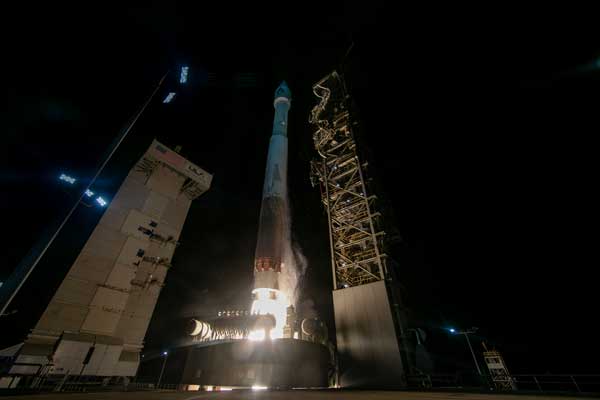
An United Launch Alliance Atlas V launched America’s newest weather satellite, NOAA’s Joint Polar Satellite System-2 (JPSS-2), from Vandenberg Space Force Base in California at 1:32 a.m. PST on Thursday. After hours of difficulty in deploying the spacecraft’s solar array, NASA says the array is now fully extended and JPSS-2 is performing normally.
JPSS-2 is the third in a series of five advanced polar-orbiting satellites that circle the Earth 14 times per day to provide a continuous stream of weather data. NASA managed the development and launch of JPSS-2 for NOAA, which operates the spacecraft.
“The need for advanced satellites, such as JPSS-2, to accurately predict weather and climate has never been greater,” said Michael C. Morgan, Ph.D., assistant secretary of commerce for environmental observation and prediction. “With the steady rise in the number of billion dollar disasters, NOAA remains committed to putting the best technology in space that leads to more reliable, timely forecasts.”
Northrop Grumman Vice President Steve Krein said JPSS-2 will allow “any ground system around the world to receive data in real time, allowing NOAA to receive global data and distribute it to activate emergency preparedness and protect lives.”
Northrop Grumman built the spacecraft and its Advanced Technology Microwave Sounder (ATMS). The sounder measures microwave radiation from the Earth’s atmosphere and surface during the day and night regardless of cloud cover.
“The global temperature and moisture profiles generated by the ATMS will allow meteorologists globally to create more accurate weather forecasting models that will help communities with natural disaster and emergency preparedness efforts,” said Aaron Dann, vice president, strategic force programs, Northrop Grumman.
NASA said that initially only one of the three segments of the solar array were deployed after the spacecraft reached orbit. It was not until late on Thursday that the space agency announced that the problem had been resolved.
“Mission managers for NOAA’s JPSS-2 confirm the satellite is now in Sun acquisition mode (initial operations mode) with the solar array fully deployed. The operations team will continue to evaluate an earlier solar array deployment issue, but at this time, the satellite is healthy and operating as expected. The team has resumed normal activities for the JPSS-2 mission,” NASA said on its website.
It was the second Northrop Grumman spacecraft to experience problems with a solar array this week. One of two arrays failed to deploy on the Cygnus cargo ship launched to the International Space Station (ISS) on Monday. Northrop Grumman said debris from an insulation blanket installed on the company’s Antares rocket had prevented the array from deployment. Cygnus was able to reach ISS despite the problem.
NASA’s Low-Earth Orbit Flight Test of an Inflatable Decelerator (LOFTID) technology demonstration was a secondary payload on the JPSS-2 launch. LOFTID is a large, inflatable heat shield designed to allow for the landing of payloads on Earth, Mars and other worlds with atmospheres.
“NOAA is an important partner for NASA in providing essential data about climate change, weather prediction and environmental modeling for the benefit of citizens both in the U.S. and around the world,” said NASA Associate Administrator Bob Cabana. “Our Launch Services Program has successfully launched its 100th primary mission, and on this same flight, enabled us to test a new technology for atmospheric re-entry with the LOFTID demonstration.”

